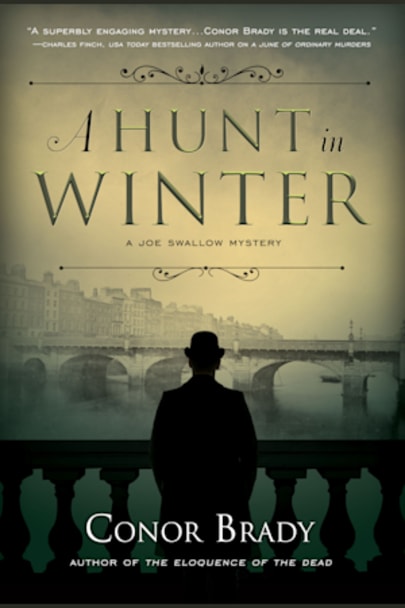In Dublin, newly promoted detective inspector Joe Swallow’s life looks to be taking a turn for the better. In addition to his promotion, he’s settled into a comfortable arrangement with his landlady and paramour, Maria Walsh. That is, until his newfound peace is chaotically uprooted when a series of violent attacks against women lead to an outbreak of panic and fear. Things on the homefront are … are about to change in an unexpected way.
In London, Charles Stewart Parnell tirelessly pursues the Irish cause for Home Rule. While the British are eager to discredit the Irish parliamentary leader and quash the growing movement towards independence, Swallow’s conflicted loyalties pull him in different directions.
As he continues his hunt for a terrifying killer, Swallow has no choice but to traverse this volatile political scene in A Hunt in Winter, Conor Brady’s thrilling third Joe Swallow mystery.
more



I expected more from this historical mystery, especially considering there are so many things in here that I normally enjoy a lot.
The set out was great: two murders and one attack on women in 1880s Dublin. This kind of violence was very rare at that time in that city, especially on women. It curiously echoed what was happening in London at the same time: someone, who the press had named Jack the Ripper, was attacking and murdering women and the police seemed pretty powerless. All the first part of the novel plays on this parallel between the two cities and I found it pretty cool.
Irish political situation takes a strong stand in the story. It touches on Charles Parnell and the attempt to discredit him in the British courts which I assume to be an historical event. I’ve always been interested in Irish history, so I really enjoyed this thread at the beginning.
Then there was Joe Swallow’s personal life, going through quite an important evolution. I like it when a mystery also gives attention to other elements then the bare-bones mystery.
So I thought there were more then enough for me to enjoy this story. But I soon realised the story dagged. In the first half of the novel there’s absolutely no progress on the three attacks. Parnell’s affair creates tension and gives the possibility to see how the Irish police worked for and with (not to mention sometime against) the British authority. Although I found it interesting and quite realistic, it seems to go in circles and after a while I started to wonder what was the point of this thread.
Swallow’s personal thread was maybe the slowest and hardly seemed to go anywhere. Long scenes with many repetitions stretched one simple fact (like Swallow’s marriage) unnecessarily for many pages.
This different threads pulled my attention in different directions and because none of them seemed to move towards a definite goal, I had a hard time focusing on them and also on getting a clear impression of the structure of the story.
Halfway through the story picked. The Parnell thread created personal problems for Swallow. Then he went to Berlin pursuing a suspect, and returned to a personally tragedy in Dublin. It all sounded very exciting. I particularly enjoyed the part taking place in Berlin. It was a glimpse in the history of a city that – in the late 1800s – was very different from the one we know. It also depicted the meeting of two very similar men belonging to two very different cultures and a realistic, sympathetic way. I really liked it.
But excited as it sounded, it then all died out once the action gets back to Dublin. In the end, Swallow’s thread was the one that gave more satisfaction. Parnell’s thread resolved in nothing and the solution of the mystery was also very disappointed… at least for me.
But in spite of this, I still enjoyed many aspects of the novel.
The setting was fantastic. This is not my usual era – my reads tend to hover between WWI and the late 1920s. It was different from what I’m familiar with in so many ways, but I loved reading about the infancy of police detection. The procedures of investigation were described in details and sounded and felt so different from what we are accustomed today. But even I – who know nothing about them – could feel the research and passion that created such vivid depiction.
The city of Dublin and life in it also came to life with a strong feel. It was so easy to imagine to be there.
The political setting was also very clearly depicted, which goes to the author’s credit. Irish politic was everything but simple, especially at that time, and I’ve seen so many authors making a mess of politics because they were not familiar enough with it.
On the whole, I had the impression the author owned the setting, since he wrote about it with great ease. I just wished the story itself would have been as compelling.